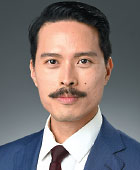What Racist Patient Encounters Taught Me About Clinical Health Justice
Abstract
Working with patients with racist views should not be seen as an opportunity to change their minds, but rather to open the way for difficult conversations about extremely complicated and often personal topics.

In this time of heightened political polarization, it often feels impossible to communicate with people of opposing views. The tension between those who see themselves as belonging to irreconcilable groups stifles any opportunities to understand each other: “Our” side is the right side, and the “other side” is the enemy. Yet as psychiatrists, we bridge that seemingly insurmountable gap almost daily with our patients, many of whom see the world in starkly different ways than ourselves. As a psychiatrist of color, I’ve found myself in the challenging position of providing care to patients who harbor vehemently racist ideas, occasionally toward my own communities. Sometimes through veiled passive aggression and other times in explicit racial epithets, patients have shared with me their race-based opinions along with their mood symptoms and relational struggles.
I had the opportunity to meet a patient I will refer to as John, a middle-aged White patient who was feeling increasingly miserable in what he described as “woke cancel culture.” He was having trouble sleeping, and he no longer found joy in his day-to-day life. His views had ostracized him from his children. After being discharged from the hospital following a suicide attempt, he constantly questioned if it was worth it to live in this world where “everyone hates me.” He met all the criteria for severe major depressive disorder, and he was genuinely hurting.
Very early in our clinical relationship, I felt compelled to set clear boundaries with this patient while trying to create a space for us to address his mood disorder. During the COVID-19 pandemic, he vehemently commented on how my people were “creating this virus.” Despite his not outwardly showing violent behaviors, I was worried about protecting my staff members of color and, frankly, myself. Secretly, my staff and I kept hoping he wouldn’t show up to the next appointment, but he was oddly fastidious in keeping his appointments.
Initially, John and I agreed that we would not touch on his thoughts and feelings against minorities, instead focusing on his bias-motivated actions. He was free to discuss his views that everything wrong with his life was related to minorities, but his actions in the clinic toward minority staff must be neutral and respectful. We focused on the consequences of his actions outside of the clinic, such as his children’s decision to ostracize him and his recent firing due to his bias-related comments on social media. We underscored his autonomy over those actions and their relationship to his mood disorder.
Over the months I worked with John, I realized that my perspective began to change. The dread of seeing his name on the clinic’s schedule slowly subsided because he stopped making disparaging comments toward our minority front-desk staff. I recognized that I had stopped trying to change his ideology. Nonetheless, the story doesn’t have a perfect happy ending. Our work together did not cause this patient to become more open minded or appreciative of the structural barriers that minorities face. I realized that he might never accept that he was acting out of racist beliefs, but over time, he became cognizant of his racist actions. At one of our sessions, he used a racial epithet in reference to a minority group, but he surprised me (and perhaps, himself) when he caught the word and apologized.
In my clinical relationship with this patient, I had many privileges. I am a man and in a position of power. I was able to create boundaries that allowed me to safely provide him with care. In respecting the limited options and privileges that minority clinicians often have, decisions to treat patients like John should be made on an individual basis. No one should be forced to jeopardize personal safety and well-being in clinical settings.
Having worked in the diversity, equity, and inclusion space for almost two decades, my experiences with patients like John helped me better understand my own perspective about health justice beyond clinical spaces. We educate our patients about the dangers of black and white thinking, and I, too, find myself struggling with my expectation that the world and its people should behave in a particular manner. The intention of these therapeutic encounters isn’t to change people’s minds, but rather to cultivate grey spaces where we can have difficult conversations about extremely complicated and often personal topics. It’s not a resignation of our values and beliefs, but rather an open invitation to walk across the aisle. In addition, patients like John have taught me to have more patience in my own professional and personal relationships, especially when cutting ties would be much easier and simpler. While “my side” may be right, I’m learning to shift my perspective that the “other side” isn’t always the enemy. ■




